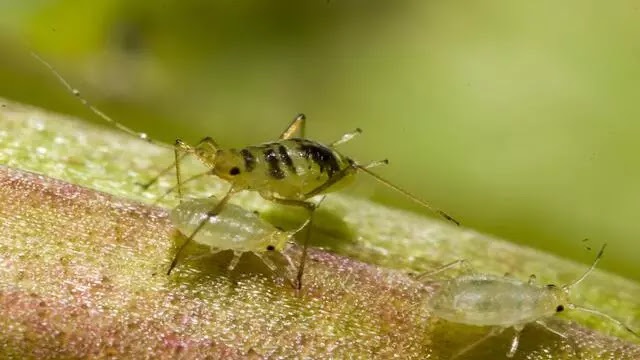what are the most interesting facts about aphid insect
Aphids are small insects that commonly feed on plants by sucking sap from their leaves and stems. They can reproduce rapidly and are known to cause damage to crops and gardens. Some natural predators, like ladybugs and lacewings, help control aphid populations.
Aphids belong to the insect family Aphididae and are known for their ability to reproduce quickly through a process called parthenogenesis, where females can give birth to live offspring without mating. They come in various colors and sizes, ranging from green to yellow, brown, and even black.
Aphids use their needle-like mouthparts, called stylets, to pierce plant tissues and feed on the sugary sap. This feeding process can weaken plants, cause wilting, and even transmit plant viruses. As aphids feed, they excrete a sugary substance called honeydew, which can attract other insects like ants and create a sticky mess on leaves and surfaces.
In response to aphid infestations, plants may undergo a stress-induced process called "gall formation," where abnormal growths or swellings develop on leaves or stems. These galls can provide shelter and nutrition to aphids.
To counter aphid infestations, gardeners often employ various strategies such as introducing natural predators like ladybugs, lacewings, and parasitic wasps, which help keep aphid populations in check. Additionally, some plants release volatile compounds when attacked by aphids, which can attract beneficial insects or repel aphids.
Aphids have a unique relationship with ants. Some species of ants "farm" aphids, protecting them from predators and moving them to different parts of plants to harvest their honeydew. In return, ants feed on the sugary honeydew secreted by the aphids.
Aphids are not just pests; they also have ecological importance. They serve as a food source for many beneficial insects, such as ladybugs, syrphid flies, and parasitic wasps. These predators help maintain a natural balance in ecosystems by keeping aphid populations in check.
Aphids have a diverse range of reproductive strategies. While many species reproduce asexually through parthenogenesis, some aphid species also have sexual reproduction. In some cases, females lay eggs that hatch into both male and female aphids, leading to sexual reproduction and the production of overwintering eggs.
Aphids can transmit plant diseases, known as "aphid-borne viruses." When an aphid feeds on an infected plant, it can pick up the virus and transmit it to other plants as it moves around and feeds.
Some plants have evolved defenses against aphid infestations. They can release chemical compounds that deter aphids or attract natural predators. In response, aphids have evolved countermeasures, such as producing toxins to deter predators or quickly reproducing to outnumber their natural enemies.
Aphids are also subjects of scientific research. Their ability to reproduce asexually and adapt to changing environments makes them interesting models for studying evolution, genetics, and ecological interactions.
aphids play a significant role in the intricate web of interactions within ecosystems, and their study continues to provide insights into various aspects of biology and ecology.




Comments
Post a Comment